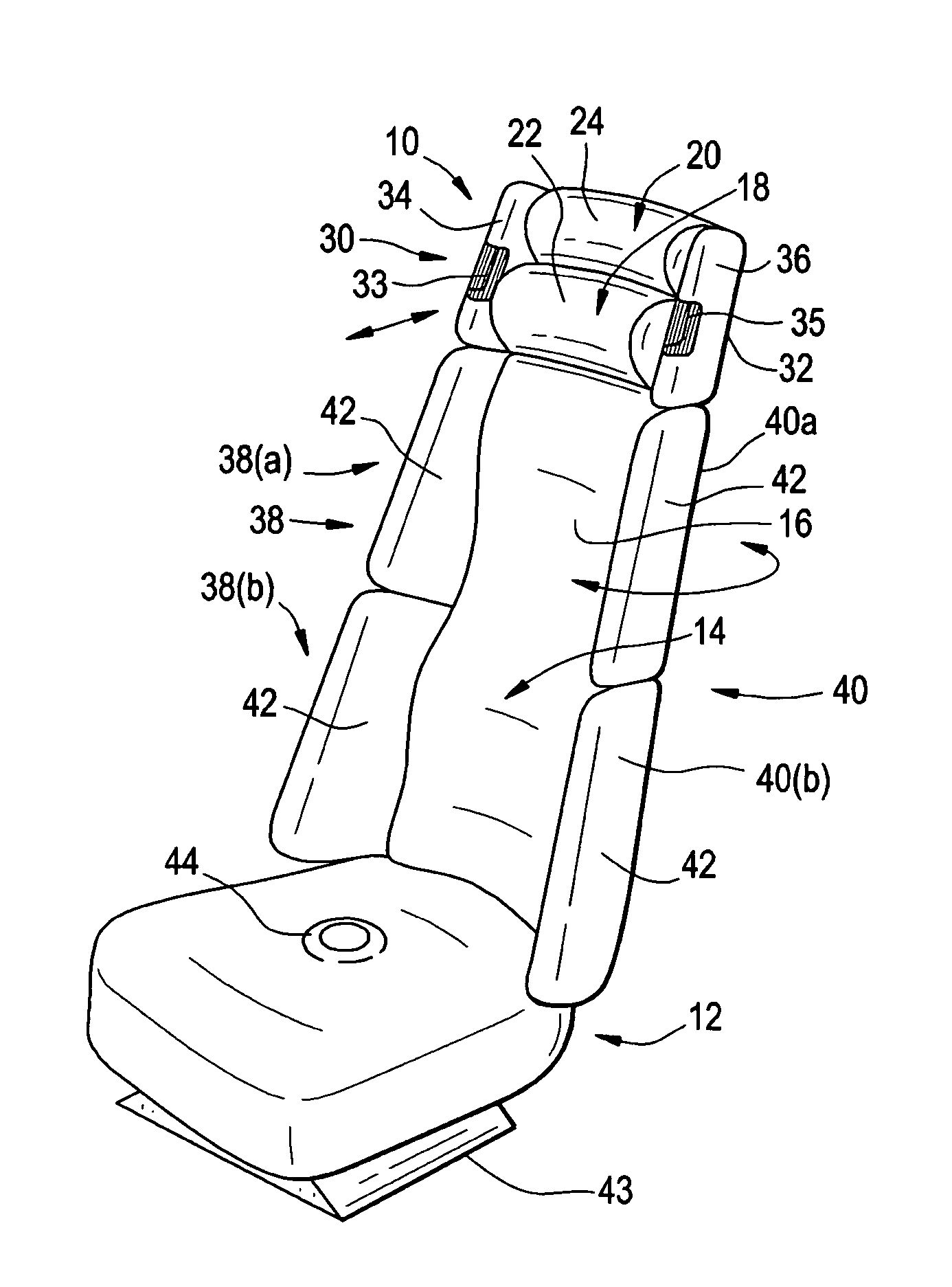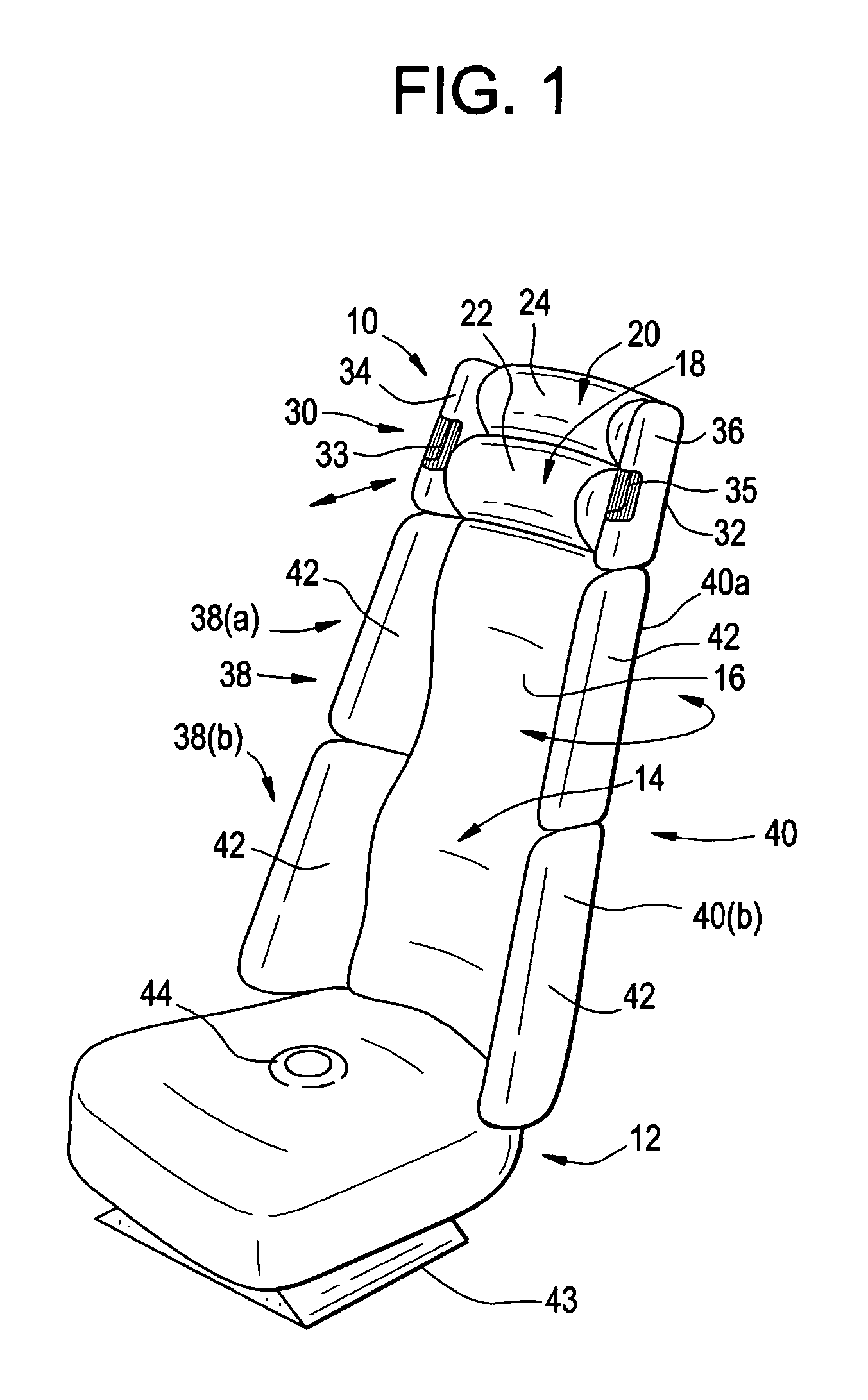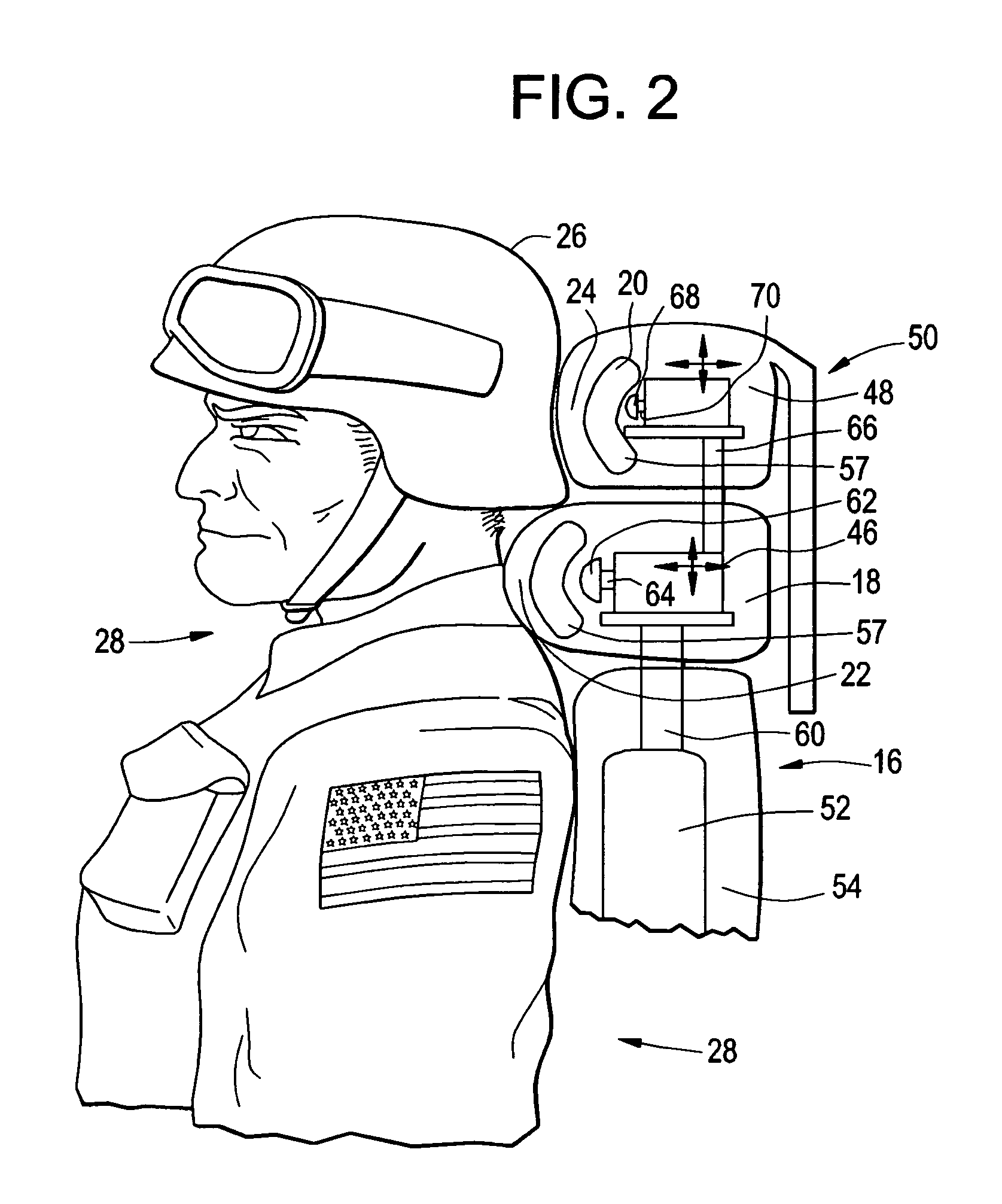Vehicle seat for reducing the risk of spinal and head injuries of personnel in combat vehicles
a technology for combat vehicles and seats, applied in the direction of chairs, pedestrian/occupant safety arrangements, vehicular safety arrangments, etc., can solve the problems of rear-end collisions, spine injuries and brain trauma, increased risk of serious spinal injuries and deaths, etc., and achieve the effect of relieving vertical round forces
- Summary
- Abstract
- Description
- Claims
- Application Information
AI Technical Summary
Benefits of technology
Problems solved by technology
Method used
Image
Examples
Embodiment Construction
[0027]In FIG. 1 a simplified perspective view is shown of a vehicle seat 10 in accordance with the present invention. Seat 10 includes a seat portion 12 for supporting the person seated thereon, and a back support portion 14 adjoined to the rear of the seat portion and extending upwardly for supporting the rearward side of the seated person. Back portion 14 comprises a lower section 16 for contacting and supporting the thorax and lower back of the seated person, and two overlying sections 18 and 20. The lower of these, section 18, as may be better seen in FIGS. 2 and 3, is positionable proximate to and supporting the neck of the seated person, while section 20 is positionable proximate to and supporting the helmeted head of the seated person. The overlying sections 18 and 20 are each independently moveable vertically and horizontally by means of servomotors, toward and away from the parts of the seated person which they are designed to support. More generally, at least the surfaces ...
PUM
 Login to View More
Login to View More Abstract
Description
Claims
Application Information
 Login to View More
Login to View More - R&D
- Intellectual Property
- Life Sciences
- Materials
- Tech Scout
- Unparalleled Data Quality
- Higher Quality Content
- 60% Fewer Hallucinations
Browse by: Latest US Patents, China's latest patents, Technical Efficacy Thesaurus, Application Domain, Technology Topic, Popular Technical Reports.
© 2025 PatSnap. All rights reserved.Legal|Privacy policy|Modern Slavery Act Transparency Statement|Sitemap|About US| Contact US: help@patsnap.com



